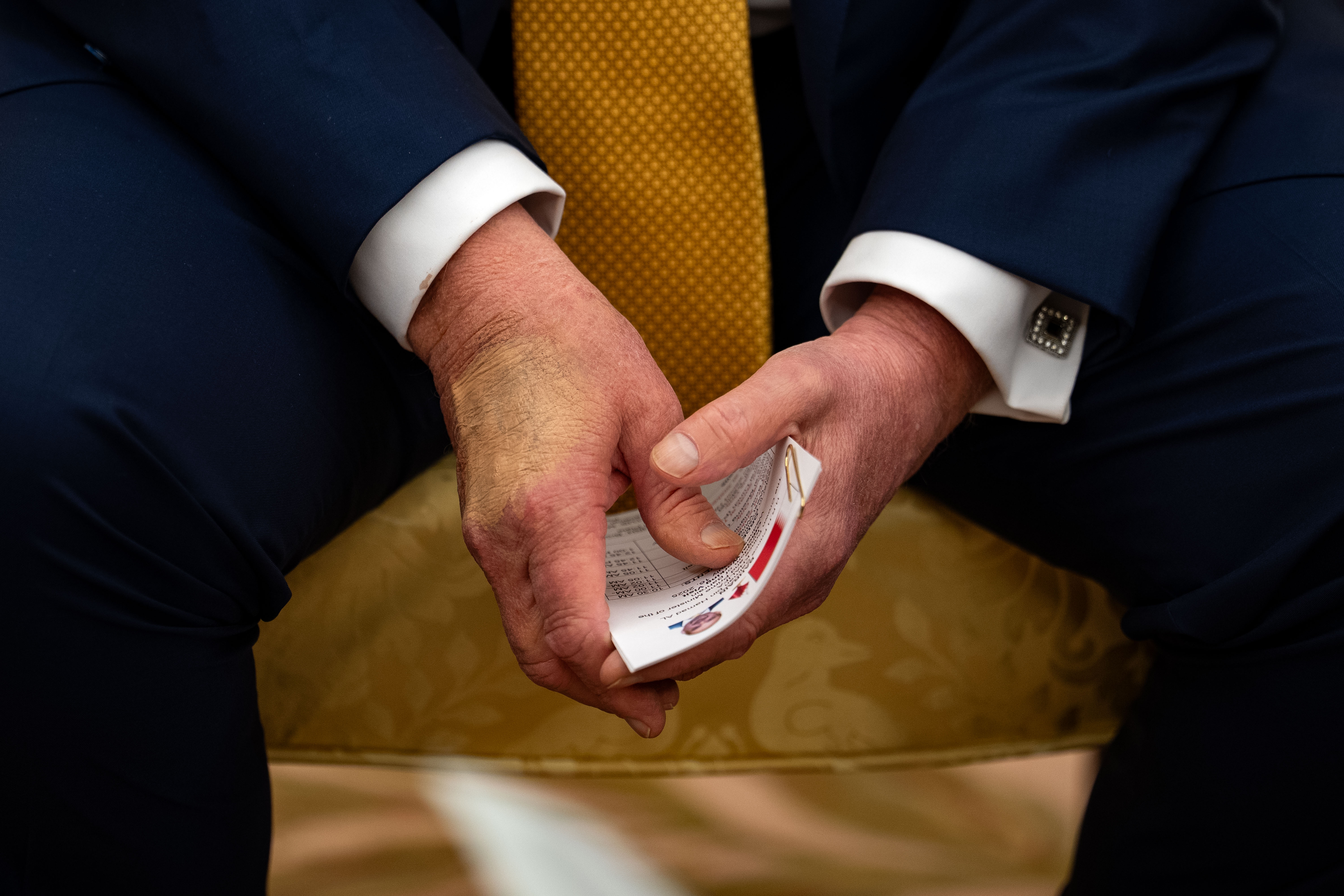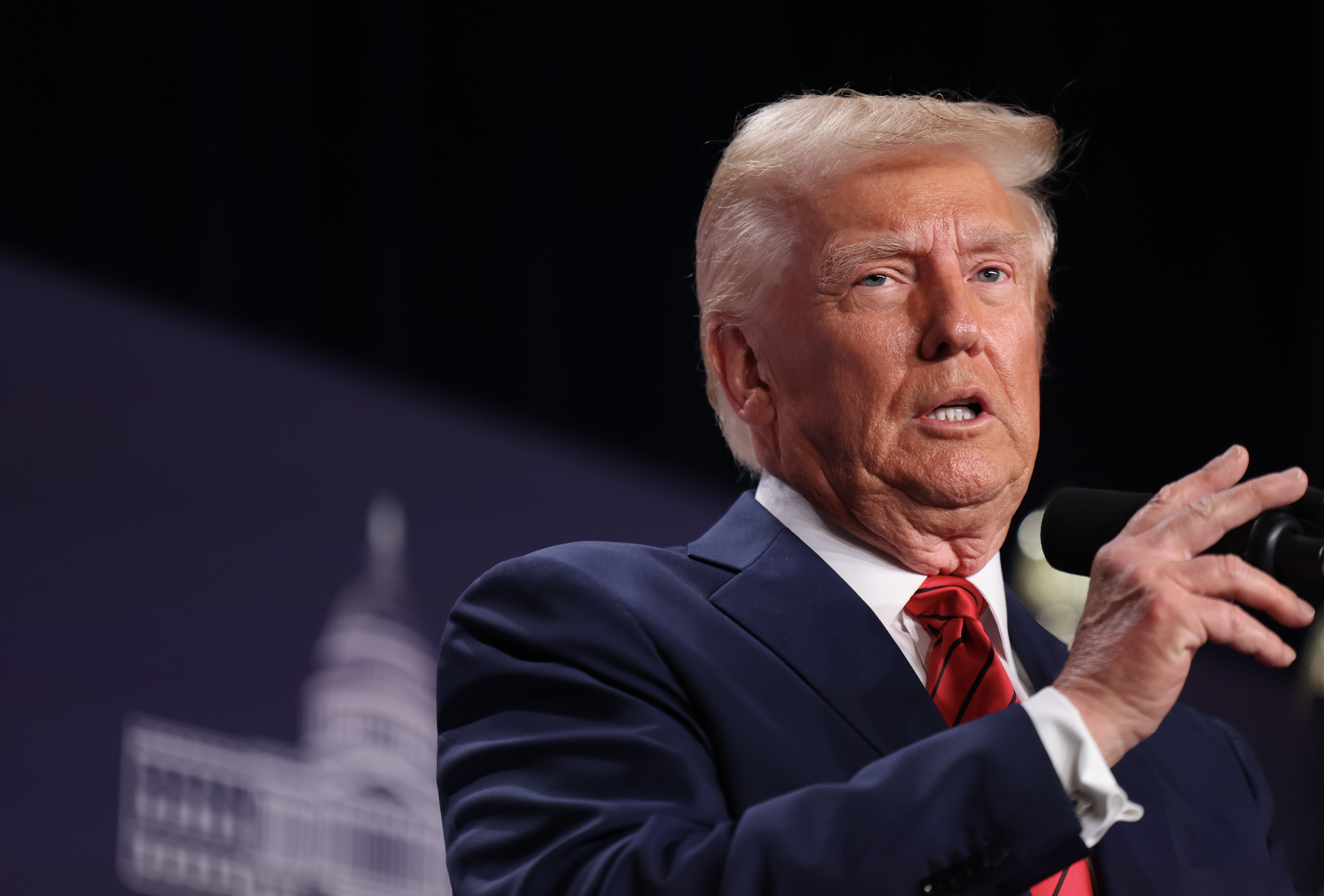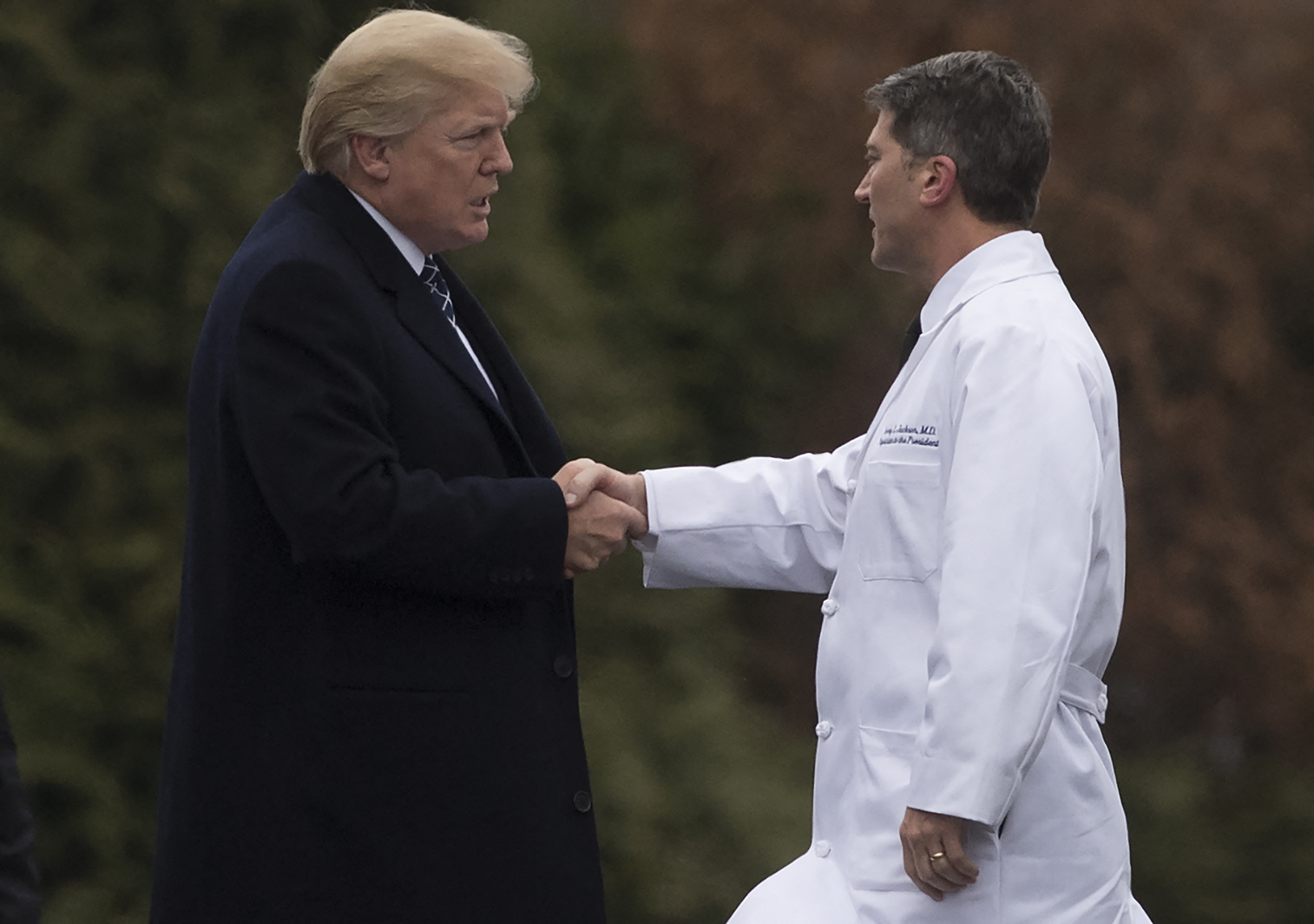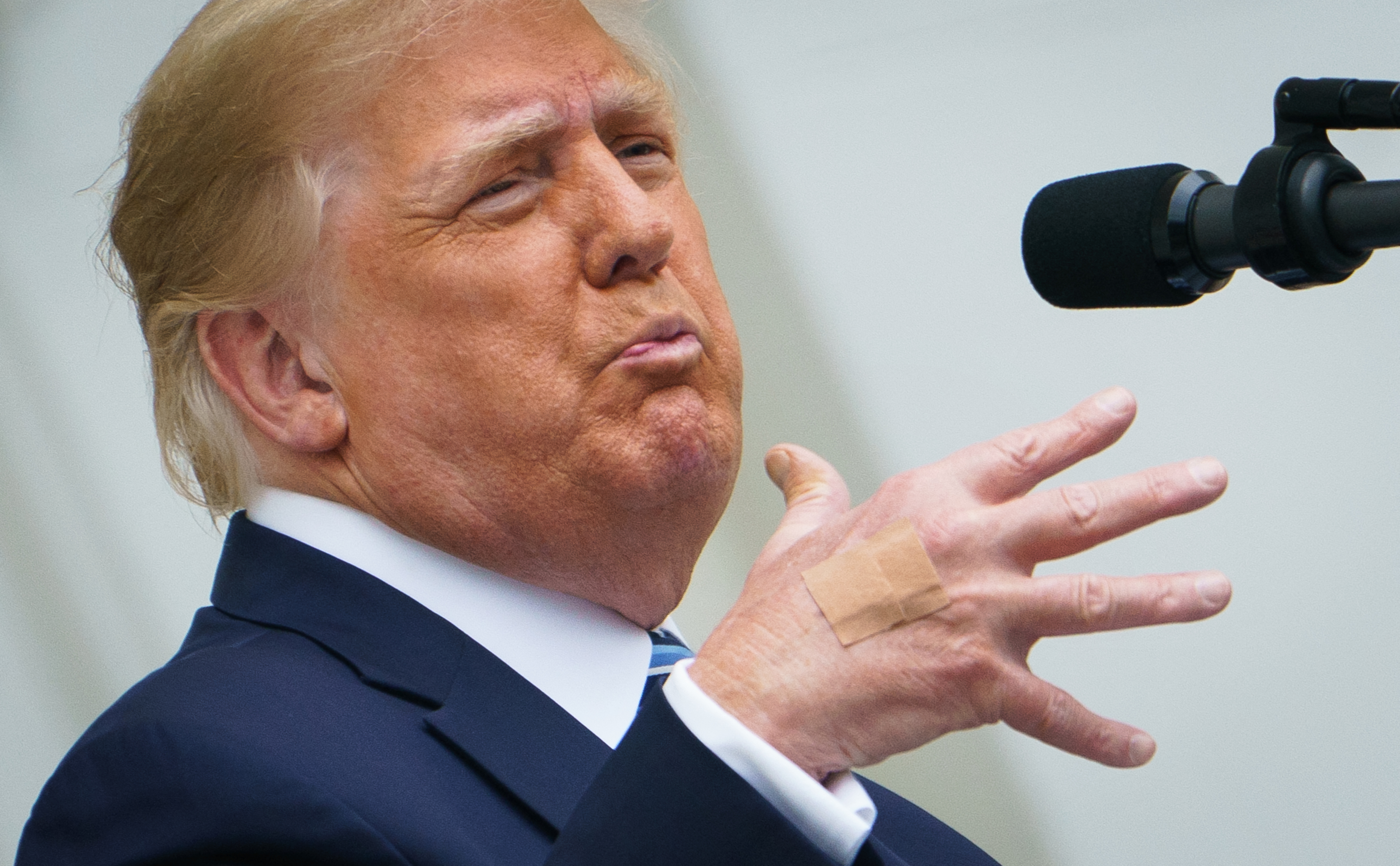Donald Trump, 79, Has Been Diagnosed With an Incurable Disease — Doctor Revealed What Causes the Greatest Concern
Donald Trump’s recent diagnosis may seem routine at first glance, but beneath it lies a web of age-related risks and medical complexities that have doctors paying close attention.
The White House recently confirmed that President Donald Trump, 79, has been diagnosed with a chronic, incurable condition following weeks of subtle but persistent symptoms. A thorough evaluation ruled out several serious issues. However, doctors ultimately identified an issue common in older adults that still warrants close monitoring.

U.S. President Donald Trump gestures on stage during the trophy presentation ceremony following the FIFA Club World Cup 2025 | Source: Getty Images
Though not immediately life-threatening, the diagnosis raises broader concerns about Trump’s vascular health. Physicians emphasize that while the condition may seem routine for his age, the underlying factors demand ongoing attention. His health remains under scrutiny, with outside specialists weighing in on what matters most moving forward.

Melania and Donald Trump attend the FIFA Club World Cup on July 13, 2025 | Source: Getty Images
What Prompted the Testing?
In the weeks leading up to the announcement, President Trump began experiencing mild but noticeable swelling in both of his lower legs. According to White House Press Secretary Karoline Leavitt, the changes were enough for the president’s medical team to initiate a full vascular assessment.
The evaluation, conducted by the White House Medical Unit, included a comprehensive exam and a set of specialized imaging tests. Among the procedures performed were bilateral lower extremity venous Doppler ultrasounds, which allowed doctors to examine the blood flow in his leg veins.
These tests revealed an underlying circulatory condition that doctors say is common among people his age, but not without implications. Trump also underwent an echocardiogram to assess heart function and determine whether the swelling might be related to heart failure or another systemic issue.
“Importantly, there was no evidence of deep vein thrombosis (DVT) or arterial disease,” wrote Capt. Sean Barbabella, the president’s physician. He also confirmed that Trump’s lab results were all within normal limits.

Donald Trump delivers remarks during a White House Faith Office luncheon in the State Dining Room on July 14, 2025 | Source: Getty Images
Despite the overall stability of his test results, the presence of swelling and the diagnosis that followed marked a shift in how closely Trump’s vascular health would be monitored. It also opened the door to more questions about what exactly caused the condition to develop and drew attention from outside medical experts.

President Donald Trump returns to the White House from Pittsburgh Pennsylvania on July 15, 2025 | Source: Getty Images
Behind the Diagnosis: What the Doctors Found
President Trump’s tests — specifically bilateral lower extremity venous Doppler ultrasounds — pointed to a chronic condition affecting the veins in his legs. It is an irreversible issue that interferes with the body’s ability to return blood from the lower limbs back to the heart.
While experts describe the finding as benign and common in people over 70, the diagnosis carries long-term implications that extend beyond routine aging. Chronic venous insufficiency (CVI) stems from malfunctioning valves inside the leg veins. In healthy circulation, these valves keep blood moving upward against gravity.

President Donald Trump and Crown Prince Salman bin Hamad Al Khalifa of Bahrain pose for a portrait on July 16, 2025 | Source: Getty Images
But when they weaken or fail, blood begins to pool in the legs, increasing venous pressure. This can lead to swelling, aching, heaviness, and, in more advanced cases, skin breakdown or open ulcers.
As pressure builds, tiny blood vessels called capillaries can burst, causing the skin to take on a reddish-brown tone and become fragile, breaking open easily with minor bumps or scratches.
Dr. Barbabella’s letter confirmed that Trump’s lab tests and heart function were normal. An echocardiogram ruled out heart failure, and there were no signs of arterial disease or blood clots. Still, the diagnosis signals that the veins in Trump’s lower legs are no longer functioning as efficiently as they should.
Experts note that this kind of vascular deterioration doesn’t reverse itself. Left unmanaged, it can progress and eventually affect mobility and skin integrity, especially in individuals with overlapping risk factors like age and weight.

Donald Trump during an executive order signing in the Oval Office in Washington, D.C. on February 11, 2025 | Source: Getty Images
What It Means: More Than Just Swelling
While the condition may sound minor, experts caution that it’s far from a cosmetic issue. Chronic problems with venous circulation can lead to a range of uncomfortable and sometimes debilitating symptoms. For many, it starts with swelling in the lower legs, particularly after long periods of standing or sitting. But over time, the symptoms can escalate.

President Donald Trump and First Lady Melania join FIFA President Gianni Infantino while watching the final match of the FIFA Club World Cup on July 13, 2025 | Source: Getty Images
Patients may experience aching, itching, heaviness, or cramping in their legs, especially at night. Some individuals also report a burning or tingling sensation, often described as “pins and needles,” especially in the lower legs and feet. Others develop varicose veins, skin discoloration, or a burning or tingling sensation.
In more advanced stages, the skin can become leathery or flaky, and open sores called venous stasis ulcers may appear around the ankles. These ulcers are slow to heal and can easily become infected. If an ulcer becomes infected, it can lead to cellulitis, a potentially dangerous condition that can spread quickly if not treated promptly.

Donald Trump in the Oval Office of the White House on July 16, 2025 | Source: Getty Images
“While [CVI] is not life-threatening, it can be debilitating,” said Dr. Chris Pernell, a public health physician. The condition affects deep, superficial, and perforating veins, the network that manages blood return from the legs to the heart.
For someone in Trump’s position — where long travel, extended periods of standing, and limited downtime are part of the routine — managing symptoms becomes especially important to avoid long-term damage.
Medical Perspective: What Doctors Fear the Most
For physicians, the most pressing question isn’t about the condition itself, but what may be driving it. Dr. Jeremy Faust, an emergency medicine expert at Harvard Medical School, explained that when venous blood flow slows, the risk of blood clots becomes a central concern.
These clots, which often begin forming in the legs, can break loose and travel through the bloodstream to the lungs—a scenario known as pulmonary embolism. “Symptoms like this do need to be evaluated for more serious conditions,” stated Dr. Faust, who added that the president’s care team had done well to rule out more urgent threats.

Donald Trump arrives to speak during a “Make America Wealthy Again” trade announcement event in the Rose Garden at the White House in Washington, DC, on April 2, 2025 | Source: Getty Images
Still, the diagnosis marks an important inflection point. Sluggish blood return isn’t just a symptom. It can also serve as a warning sign of cardiovascular strain elsewhere in the body. As Faust explained, clotting disorders can escalate quickly and often without warning.
In some cases, they’re treated with simple blood thinners. In other cases, emergency procedures are required to remove or dissolve dangerous blockages. That spectrum of risk, Faust noted, is exactly why the president’s circulatory health demands close and continuous evaluation.

Donald Trump arrives to speak at the National Republican Congressional Committee (NRCC) dinner at the National Building Museum in Washington D.C., on April 8, 2025 | Source: Getty Images
Other specialists are urging a closer look at what may have triggered it. “Even though he’s diagnosed with a benign condition… the question is, what’s causing the venous insufficiency?” asked Dr. Bernard Ashby, a cardiologist. “I would want to know whether or not he has any evidence of, again, increased pressures in the heart or increased pressures in the lungs.”

Donald Trump speaking at the 2025 Republican Issues Conference in Doral, Florida on January 27, 2025. | Source: Getty Images
Ashby emphasized that the real issue isn’t just the malfunctioning veins. If the heart is pushing harder than it should or the lungs are working against abnormal resistance, those factors can disrupt circulation and lead to the kind of symptoms Trump reported.
That’s why, according to Ashby, the full evaluation by the president’s medical team was more than a precaution. It was a necessary step to rule out more serious underlying conditions. And while those tests came back normal, continued observation remains important in case new signs emerge over time.

Donald Trump shakes hands with Dr. Ronny Jackson, following his annual physical at Walter Reed National Military Medical Center in Bethesda, Maryland, on January 12, 2018 | Source: Getty Images
Known Risk Factors: The Role of Age and Inactivity
Medical experts agree that several well-established risk factors contribute to the development of this kind of vascular condition, and President Trump fits into more than one of them. Age is a primary factor, as the elasticity and function of veins decline over time. In his late 70s, Trump falls squarely into the demographic most affected.

Bandages are seen on the back of his hand as Donald Trump speaks from the South Portico of the White House in Washington, DC during a rally on October 10, 2020 | Source: Getty Images
Dr. Pernell noted that excess weight and low physical activity are also key contributors. Standing or sitting for extended periods can further slow blood return and increase vein pressure in the legs. Even with a relatively active public schedule, the demands of office don’t always allow for the kind of movement and exercise that help offset circulatory strain.
Over time, these risk factors can compound and make the condition harder to control. Though it may not interfere with Trump’s day-to-day responsibilities right now, its progression could lead to more discomfort or mobility issues if not closely managed.

Donald Trump walks towards Marine One on the South Lawn of the White House in Washington, D.C., on March 28, 2025 | Source: Getty Images
Tracking Trump’s Medical History
Earlier this year, President Trump underwent his annual physical at Walter Reed Medical Center. According to the official summary released in April, the results showed no major concerns. His heart, lungs, brain, and other vital systems were described as functioning well, with lab tests all falling within healthy ranges.
Fourteen medical specialists participated in the evaluation, and Trump passed every screening, including those for memory, mental health, and cardiovascular function. The report described him as maintaining an “active lifestyle,” noting regular participation in public events and recreational activities like golf.

Donald Trump plays golf during the Official Pro-Am Tournament ahead of the LIV Golf Invitational Series event at Trump National Golf Club Bedminster in Bedminster, New Jersey, on August 10, 2023 | Source: Getty Images
At the time, his weight was recorded at 224 pounds, and he was taking a daily aspirin along with two medications for cholesterol management. His blood pressure, cholesterol levels, and cognitive scores were all within normal limits.
The aspirin use later offered a simple explanation for the light bruising seen on the back of his hand. The White House attributed it to a combination of daily aspirin and frequent handshaking, which can make the skin more susceptible to minor soft tissue irritation. Dr. Barbabella confirmed that the marks were not related to any underlying condition.

Donald Trump welcomes Crown Prince Salman bin Hamad Al Khalifa of Bahrain outside the west wing of the White House on July 16, 2025 | Source: Getty Images
“President Trump remains in excellent health,” the April report concluded, emphasizing that he was fully fit to carry out the responsibilities of the presidency. With daily duties that demand both endurance and visibility, Trump’s health remains a matter of public and political focus.



